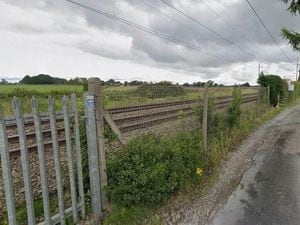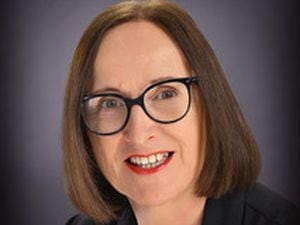Penkridge solar farm plans approved despite dozens of objections
A solar farm can be installed on land at a Penkridge farm despite dozens of objections to the plans.

While there were 11 letters of support for the development on land around Preston Hill Farm at Preston Vale, 70 objections were submitted to South Staffordshire Council.
Objectors raised concerns about loss of agricultural land, danger to road users and devaluation of house prices. But South Staffordshire Council’s planning committee gave the green light for the development at its latest meeting, with eight members voting in favour, five against and one abstention.
Members heard that the solar photovoltaic electricity generating station would extend to approximately 62 hectares (153 acres) and generate enough energy to potentially power around 14,000 homes. The application was recommended for temporary permission for up to 40 years by planning officers.
But Katie McCreath, speaking against the application, said: “The land stands on the brink of irreversible change. The fields are in danger of being completely eclipsed under an expanse of industrial solar panels, lost forever.
“We don’t wield pitchforks or fire, we come with facts embodying the spirit of democracy. We are not anti-renewable, we understand the value of their importance.
“However we firmly believe this is the wrong place for this project. The anxiety and stress experienced by many who sit here tonight is profound – and others who didn’t even feel they could attend.
“We are already surrounded by renewable energy sources in this very small community; you have pending the Gailey interchange with 150 acres of solar panels and battery storage, Rodbaston’s two wind turbines generating significant power and Lower Drayton Farm’s digesters. You have so many applications pending which may be better and safer than this project, yet the community has been railroaded into accepting more without considering the current contributions, or the fact it could take up to a decade to get connected to the grid.”
Ward councillor Andrew Adams also spoke against the application. He said: “The proposed use of best and most versatile land grade 2 and 3a gives me concern – it’s 39% in this application and that’s the equivalent of 44 football pitches.
“Only a short while ago you declined an application for 170 acres of solar factory not even a mile up the road from this application. There is potential this application may come back; I sincerely hope not.
“The cumulative effect on this area would be devastating. The parish council are not in favour of this application, stating it is industrialisation of agricultural farmland, the residents don’t want this application.
“I am not against clean and green energy. What I am wholeheartedly against is using good quality agricultural land.”
Peter Thomas, who spoke in support of the plans on behalf of applicant Aura Power, read out a statement on behalf of the farmer which said that approving the solar farm would not pose a risk to food security however. It added: “We have been farming this land for 43 years and are primarily a livestock farm with around 300 cattle and 1,800 sheep.
“Over the last five years, the crops we have grown have been used for animal feed or as feedstock for bioethanol energy plants. Very little is produced for human consumption.
“The land being used for the solar panels has been specifically chosen because it is the least productive land on our farm. We plan to graze sheep around the panels if the site is approved.
“As farmers, we have been facing several challenges recently with the removal of farm subsidies, increased fertiliser costs and high energy costs. This solar farm will allow us to diversify our income streams and futureproof our business by producing food on the farm as well as electricity.”
Mr Thomas told the committee the applicant was offering a voluntary community benefit fund of £20,000 per year for the lifetime of the solar farm. He added: “The use of agricultural land is unavoidable, but we always seek to avoid using good quality agricultural land in our developments where possible.
“Approximately 64% of this site comprises grade 3b land, which is not classed as best and most versatile. It is also worth highlighting that the farmer plans to continue grazing the fields where the panels are located and that there is ample good quality farmland in this district.
“Our proposals also include extensive new planting, including a kilometre of new native trees and hedgerows and 12 hectares (29.7 acres) of wildflower meadows. All the existing ponds on the site will be retained and any trees that are damaged because of the work completed will also be replaced.”
Ward councillor Sam Harper-Wallis, who arrived late to the meeting and so was unable to vote on the application, said he would have voted in favour of it and highlighted the projected rise in greenhouse gas emissions in coming years, with much of the emissions being energy-related. He said: “We’ve got to make a choice whether we ignore the warnings that scientists are giving us or make an active contribution to stopping climate collapse.
“There is a strong argument to be made around securing the UK’s energy sector. We must reduce our overall reliance on imported energy to further strengthen the UK’s independence as a nation.”





